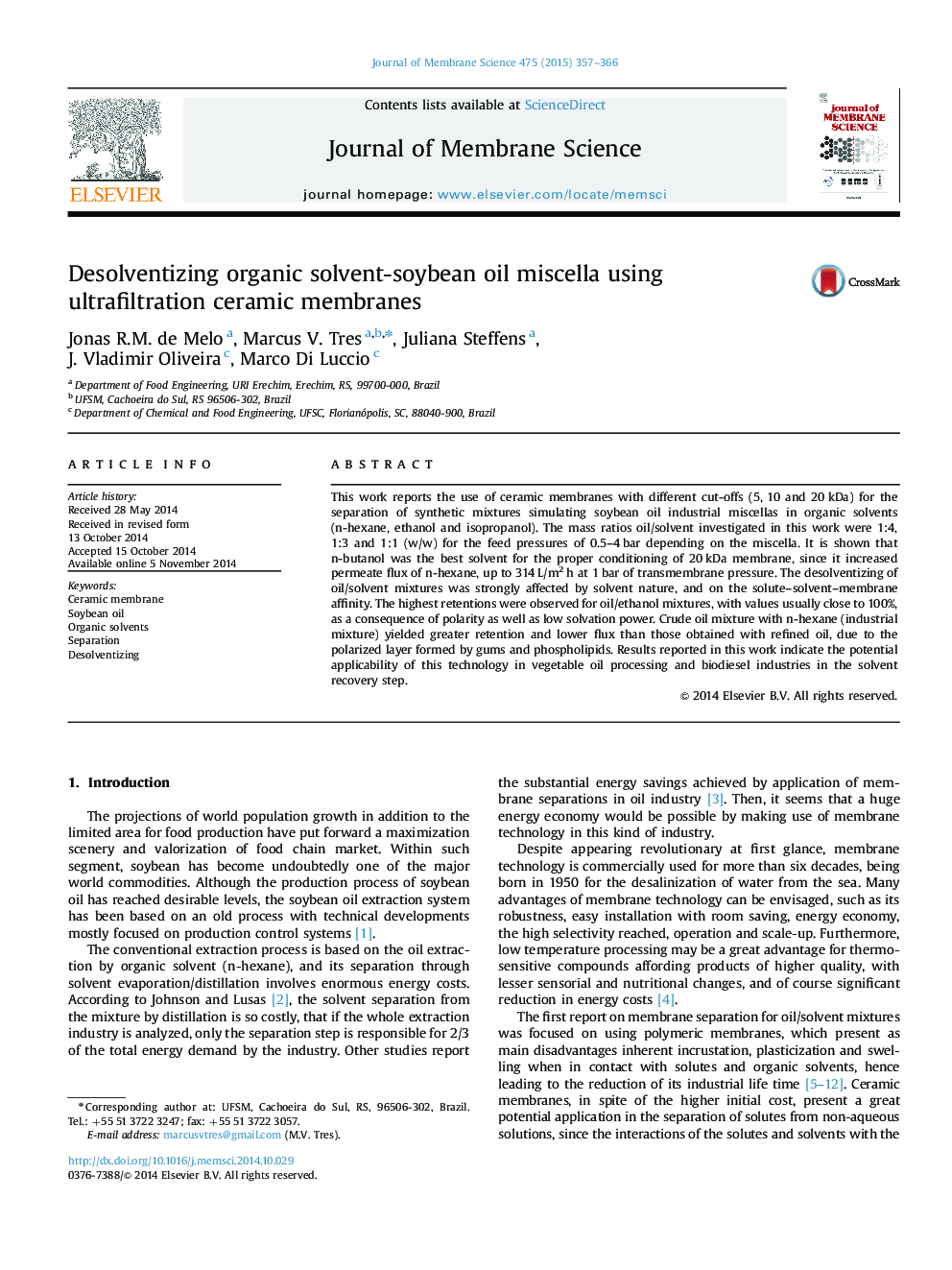| Article ID | Journal | Published Year | Pages | File Type |
|---|---|---|---|---|
| 633171 | Journal of Membrane Science | 2015 | 10 Pages |
Abstract
This work reports the use of ceramic membranes with different cut-offs (5, 10 and 20Â kDa) for the separation of synthetic mixtures simulating soybean oil industrial miscellas in organic solvents (n-hexane, ethanol and isopropanol). The mass ratios oil/solvent investigated in this work were 1:4, 1:3 and 1:1 (w/w) for the feed pressures of 0.5-4Â bar depending on the miscella. It is shown that n-butanol was the best solvent for the proper conditioning of 20Â kDa membrane, since it increased permeate flux of n-hexane, up to 314Â L/m2Â h at 1Â bar of transmembrane pressure. The desolventizing of oil/solvent mixtures was strongly affected by solvent nature, and on the solute-solvent-membrane affinity. The highest retentions were observed for oil/ethanol mixtures, with values usually close to 100%, as a consequence of polarity as well as low solvation power. Crude oil mixture with n-hexane (industrial mixture) yielded greater retention and lower flux than those obtained with refined oil, due to the polarized layer formed by gums and phospholipids. Results reported in this work indicate the potential applicability of this technology in vegetable oil processing and biodiesel industries in the solvent recovery step.
Related Topics
Physical Sciences and Engineering
Chemical Engineering
Filtration and Separation
Authors
Jonas R.M. de Melo, Marcus V. Tres, Juliana Steffens, J. Vladimir Oliveira, Marco Di Luccio,
